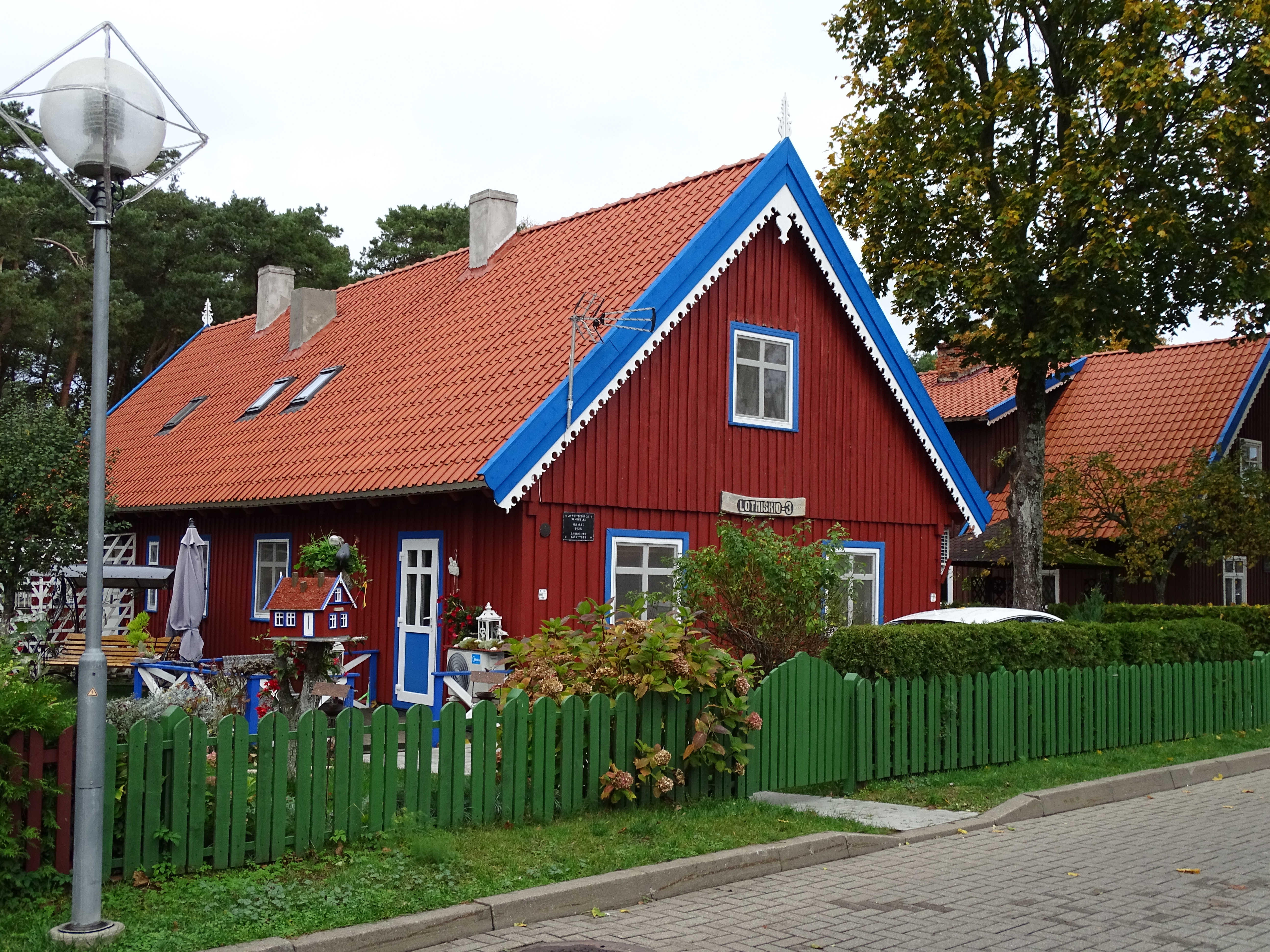Cultural Heritage on the Curonian Spit
The Curonian Spit is a 98 km long narrow headland separating the Curonian Lagoon in the east from the Baltic Sea in the west. Its southern part lies in Kaliningradskaya Oblast' (Russia), its northern part in Lithuania. It represents a unique and vulnerable cultural landscape, which was declared a World Heritage Site by UNESCO in 2000. The Spit has been shaped by the sea, the wind and human activities. The history of the Spit began about 5,000 years ago, when sand was deposited along moraine islands and an elongated ridge of dunes emerged, separating the Curonian Lagoon from the Baltic Sea. Later, forests grew on the spit and the first settlements were established.
After intensive deforestation in the 17th and 18th centuries, the dunes began to move towards the Curonian Lagoon and buried the oldest settlements. At the turn of the 19th century, it became clear that without immediate action, human settlement would no longer be possible. At first, a protective ridge of dunes was built along the sea coast to prevent the migration of sand to the inland areas. Afterwards, the large sand dunes located on the lagoon side were reforested using elaborate methods. Today, the Curonian Spit is dominated by forests and the remaining sand dunes. Settlements cover only about 6 % of the area.
Until the turn of the 19th and 20th centuries, the Spit was a peripheral landscape that attracted little attention. Due to the unfavourable natural conditions, the spit has always had a small population, concentrated in a few villages and mainly living off fishing. While the Spit was originally settled by people of Baltic origin, in the Middle Ages German-speaking colonists settled primarily in the southern part. From the 16th century onwards, immigrants from the Latvian-speaking Courland joined them, and as Kurs they soon made up the majority of the population on the Spit. From the 18th century onwards, there was increased immigration from other parts of Germany and from Lithuanians from the Lithuanian-speaking part of East Prussia. In this way, an ethnically mixed population emerged that was significantly influenced by the cultural traditions of the largely isolated Kurs and their fishing crafts. Despite the onset of Germanisation, as fostered by schools, military service and increasing connections to the mainland from the 19th century onwards, many of these traditions managed to survive until the Second World War.
Since the end of the 19th century, the spit has also attracted increasing attention beyond the region. As a landscape of special character, it was described as the "Prussian Sahara" and aroused the interest of naturalists and educational travellers such as Gottlieb Behrendt, Albert Bezzenberger, Wilhelm and Alexander von Humboldt and Ludwig Passarge. Around the turn of the century, the first tourists came to the spit. Moreover, artists discovered the Spit for themselves. Thus, even before the First World War, an artists' colony of predominantly expressionist painters was established in Nidden. At the end of the 1920s, Nobel Prize winner Thomas Mann also moved into a summer house on the Spit.
After the Second World War, the political, ethnic and economic conditions on the Curonian Spit changed fundamentally. The Spit was incorporated into the Soviet Union, with the southern part now belonging to the RSFSR and the northern part to the LSSR. At the same time, the Spit was repopulated. The new inhabitants mainly came from other parts of Lithuania in the north and from the Russian part of the Soviet Union in the south. The former population had already been evacuated at the end of 1944 or fled at the beginning of 1945. In contrast to the southern part of the Spit, it was still possible for former residents to return to the Lithuanian part of the Spit as autochthones in the post-war period. However, the few families who made use of this option largely emigrated to Germany in the following decades due to the changed conditions. The changed political conditions were accompanied by fundamental changes in the economic framework. Fishing kolkhozes replaced the formerly independent individual fishermen, and ignorance of the special conditions and traditions of fishing in the Curonian Lagoon led to the introduction of completely different fishing methods.
The year 1945 thus marked a deep break in the centuries-long development of the traditions of the Spit inhabitants and their identification with their living space. Despite this historical break, diverse evidence of the cultural heritage of their former inhabitants has been preserved to this day.

